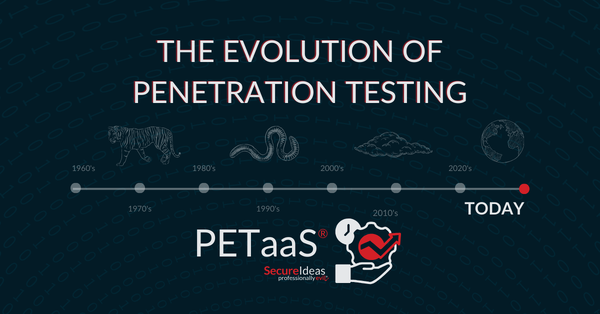Cybersecurity is an ever-changing game of cat and mouse, with organizations constantly striving to stay one step ahead of malicious actors. Penetration testing is a critical component in this battle, helping to uncover vulnerabilities before they can be exploited. However, the penetration testing industry is not without its challenges, some of which can hinder the effectiveness of these vital assessments. That's why we've compiled the top 8 pentest problems and their practical solutions to help you stay ahead in the cybersecurity race. Throughout this article, you'll also discover how Secure Ideas, a leader in the field, tackles these issues to ensure you receive real, high-quality penetration tests that genuinely meet your organization's needs. Get ready to dive into the world of penetration testing and uncover the secrets to overcoming its most pressing challenges!
1. The Scheduling Struggle: Resource Availability in Penetration Testing
Problem: Long wait times can make it difficult for organizations to schedule penetration tests, delaying crucial security assessments and potentially leaving vulnerabilities unaddressed.
Solution: Organizations should plan their penetration tests well in advance and work closely with testing providers to secure slots. One option to consider is Secure Ideas' test credits, which allow organizations to prepare for penetration testing services in advance without needing to specify the exact scope of the tests. This flexibility can help shorten the scheduling time. Additionally, Secure Ideas maintains a bench of qualified penetration testers, enabling them to schedule work in weeks instead of months. Alongside engaging with providers like Secure Ideas, organizations can also consider having an internal team of penetration testers to supplement external testing and reduce dependency on external resources.
2. Quality Control Crisis: Avoiding Subpar Penetration Testing Results
Problem: Poor quality results may arise from companies passing off vulnerability scans as penetration tests, using unqualified testers, or relying too heavily on automated tools, leading to false positives or negatives, or engagements that don't meet regulatory requirements such as PCI or HIPAA.
Solution: Ensure that the selected penetration testing provider has a strong track record and employs certified professionals with relevant industry experience. One example is Secure Ideas, a company that employs only USA and Canada-based penetration testers and guarantees real penetration tests, not vulnerability assessments. Secure Ideas' senior consultants have significant IT industry experience, which helps them understand the challenges faced by businesses. They also use multiple internal quality controls to ensure high testing quality and valuable report deliverables. When selecting a provider, inquire about their testing methodologies and request references from previous clients. Be cautious of providers that rely solely on automated tools and prioritize those that combine automated and manual testing techniques.
3. Cutting the Red Tape: Streamlining Onboarding and Procurement Processes
Problem: Lengthy onboarding and procurement processes can hinder organizations from quickly securing penetration testing services when needed.
Solution: Develop a standardized and efficient procurement process for penetration testing services. One option to consider is Secure Ideas' test credits, which not only facilitate faster scheduling but also streamline the procurement process. By purchasing credits, organizations can secure multiple real penetration tests with just one trip through procurement. Establish relationships with trusted vendors and maintain an up-to-date list of approved providers. To help you identify trustworthy providers, consider reading our article on recommended penetration testing vendors. Regularly evaluate and update procurement policies to minimize delays and administrative bottlenecks.
4. Establishing Consistency: Addressing Lack of Standardization and Transparency
Problem: Inconsistent methodologies, reporting standards, and limited transparency about tester qualifications can make it difficult for organizations to evaluate the quality of penetration testing services.
Solution: Organizations should advocate for industry-wide standards and certifications, such as the Penetration Testing Execution Standard (PTES) or the Open Web Application Security Project (OWASP). When selecting a provider, inquire about their adherence to these standards and request information on the qualifications of their testers. Secure Ideas is an example of a provider that follows a standard methodology based on PTES and actively supports OWASP, ensuring consistency and transparency in their services. To learn more about Secure Ideas' methodology, consider reading their detailed article on this topic. Regularly evaluate and update procurement policies to minimize delays and administrative bottlenecks.
5. Broadening the Horizon: Overcoming Limited Scope and Contextual Understanding
Problem: Narrowly defined scopes and insufficient understanding of an organization's business context can lead to overlooked vulnerabilities and misguided recommendations.
Solution: Clearly define the scope of the penetration test to cover all critical systems and applications, taking into account the organization's unique business context, risk appetite, and any potential security blind spots. Failure to do so can lead to a false sense of security, mistakenly believing that the organization is up-to-date on patch and vulnerability management. Providing the testing team with a comprehensive overview can ensure that their recommendations are relevant and actionable, helping to improve the overall security posture of the organization.
6. Bridging the Gap: Overcoming Communication Challenges in Penetration Testing
Problem: Misunderstandings between penetration testing companies and client organizations can impact the effectiveness of tests and addressing identified vulnerabilities.
Solution: Establish clear and open communication channels between your organization and the penetration testing provider from the outset. Choose a provider that offers multiple communication methods, such as email, Slack, and video conference calls, and has a secure portal for exchanging sensitive information. Secure Ideas, for instance, provides regular updates throughout the real penetration test period and conducts a debrief at the end of each engagement. Be proactive in seeking clarification on any uncertainties and involve key stakeholders from both parties in discussions to ensure a shared understanding of objectives, scope, and findings.
7. Shifting the Focus: Overcoming the Overemphasis on Compliance in Penetration Testing
Problem: Organizations may view penetration testing as a checkbox for compliance rather than a tool to identify and address vulnerabilities, which can result in a limited understanding of their security posture.
Solution: To ensure a comprehensive understanding of an organization's security posture, adopt a proactive approach by considering various types of assessments that address different needs and help get ahead of potential vulnerabilities. In addition to penetration tests, assessments such as gap analyses or security architecture reviews can provide valuable insights into an organization's security posture. Secure Ideas offers services like gap analysis against the CIS Critical Controls or NIST framework, and security architecture reviews to help organizations proactively strengthen their security. While Secure Ideas can perform penetration testing for compliance checkbox purposes, one of our main goals is always to help improve the organization's security posture. For more information on these services, explore Secure Ideas' gap analysis and security architecture review offerings. Educate key stakeholders on the benefits of a proactive security approach that goes beyond merely meeting compliance requirements, emphasizing the importance of understanding and addressing vulnerabilities to protect the organization.
8. Going the Extra Mile: Supporting Remediation Activities Post-Penetration Testing
Problem: Limited support from penetration testing providers after tests are completed can make it difficult for organizations to address identified vulnerabilities effectively.
Solution: Choose a penetration testing provider that offers post-test support for remediation activities. Secure Ideas, for instance, is always happy to join conference calls to discuss findings and provide guidance on necessary remediation steps. Clients who leverage Secure Ideas' advisory services can also reach out to their team via Slack or email to discuss any aspect of their security posture, even if it is unrelated to penetration test results. Establish clear expectations regarding the level of support you expect from your provider during the procurement process to ensure that you receive the necessary assistance to effectively address identified vulnerabilities.
Navigating the complex landscape of penetration testing can be daunting, but addressing the top 8 pentest problems can significantly improve the value and effectiveness of your organization's cybersecurity strategy. By choosing the right provider, establishing clear communication channels, and adopting a proactive security approach, you can ensure that your organization stays one step ahead of potential threats. Secure Ideas is dedicated to delivering real, high-quality penetration tests that not only meet compliance requirements but also help improve your organization's security posture. If you'd like to discuss your pentesting needs or learn more about how Secure Ideas can help you overcome the challenges in the penetration testing industry, reach out to our team today. Together, we can build a more secure future for your organization.




